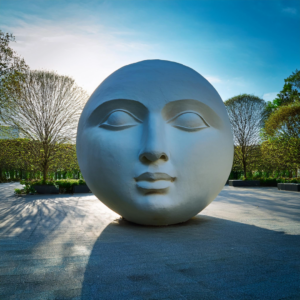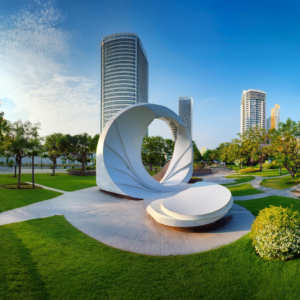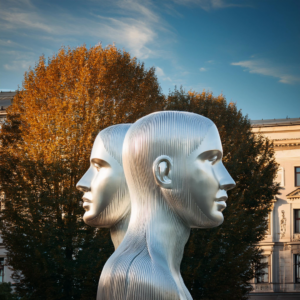Roundabout Art: Transforming Traffic Spaces into Landmarks
Roundabout art refers to sculptures, installations, or other forms of art strategically placed at the center of traffic roundabouts, circular intersections that are designed to manage traffic flow efficiently. These public art pieces serve multiple purposes: they enhance the visual appeal of the roundabout, provide a unique focal point for drivers, and transform ordinary traffic spaces into distinctive landmarks. By integrating creativity into infrastructure, roundabout art helps to beautify urban and rural environments, turning these otherwise functional areas into vibrant, engaging works of public art.

Roundabout art comes in many forms, ranging from abstract sculptures to detailed, thematic installations that reflect the cultural, historical, or natural heritage of the area. Some roundabout artworks are abstract, using dynamic shapes and forms to symbolize motion, continuity, or the flow of traffic itself. These abstract pieces might include sweeping curves, twisting structures, or geometric designs that mirror the roundabout’s circular nature. In contrast, other roundabouts feature more representational works, such as sculptures of local wildlife, historical figures, or symbols that represent the region’s identity and values. For instance, a roundabout in a seaside town might feature a sculpture of a giant fish or an anchor, while one in a mountainous area might display an image of a peak or wildlife endemic to the region.

In addition to their visual appeal, roundabout art plays an important functional role. It helps improve the visibility of the intersection, making it easier for drivers to recognize the roundabout and understand the direction of traffic flow. In areas with high traffic volumes, the presence of art can also help reduce confusion, calming traffic and enhancing driver safety. Furthermore, these pieces often serve as distinctive landmarks, helping locals and visitors alike navigate the area with greater ease. In this way, roundabout art combines practicality with creativity, turning everyday traffic situations into experiences that are both enjoyable and memorable.

Many cities around the world have embraced roundabout art as a way to beautify public spaces and make traffic systems more pleasant. Countries like France, the United Kingdom, and the United States have integrated art into roundabouts, seeing it as a way to improve the aesthetic quality of their urban landscapes. For instance, in the French town of Bourges, a large roundabout features a stunning bronze sculpture of a tree, while in New Zealand, a roundabout in Christchurch is adorned with intricate Maori-inspired art. These installations serve as cultural expressions, offering a visual story about the community and its values.
Roundabout art has the power to foster a sense of place, pride, and identity within a community. Residents often take pride in the unique artworks in their neighborhoods, as these sculptures reflect the spirit of the area and contribute to its cultural richness. Local artists are frequently commissioned to create the pieces, ensuring that the artworks are closely tied to the area’s history and traditions. In this way, roundabout art also supports local economies, promoting tourism and local craftsmanship.

In addition to its aesthetic and practical functions, roundabout art serves as a vehicle for community engagement. Many projects involve collaboration between local governments, artists, and residents, with community members sometimes contributing ideas or even participating in the design process. This collaboration fosters a sense of ownership and investment in the artwork, enhancing the connection between the people and their public spaces.
Roundabout art is an excellent example of how public infrastructure can be transformed through creativity. By blending functionality with artistic expression, these installations create spaces that are not only visually appealing but also meaningful to the communities they serve. As cities and towns continue to embrace this innovative approach, roundabout art will undoubtedly remain a key element in the design of modern urban landscapes.
